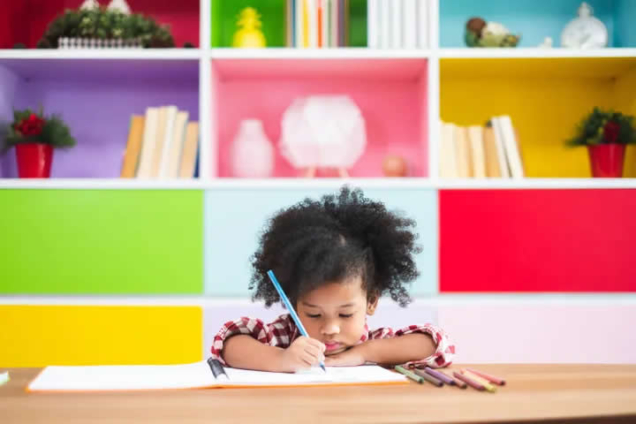It can be hard to know how well your child is coping with the impact of school closures during the coronavirus pandemic. By now most kids will have been at home for several weeks, separated from their friends and their regular routine.
Some might be having more tantrums than usual, others could be seeing more withdrawn or emotional, and if your child is anything like my three-year-old son, they’ll now only agree to answer if you call them “Iron Man”. It can be worrying, as parents and carers, to know whether or not your child is okay.
Here are some ideas to ‘check in’ and get them talking about their feelings.
Try writing a ‘powim’
My daughter, eight, wrote this adorable ‘powim’ (her spelling) about happiness. Try asking your child to brainstorm a load of words they associate with the prompt ‘I feel...’ and see what they come up with.
Mail a letter (or a worry)
Alternatively, you could ask if they want to write a letter (they don’t necessarily have to mail it) or put down on paper, one by one, things that might be bothering them, before posting them into a “worry box”.
Act it out
Sometimes kids will show you how they’re really feeling by pretending to be someone – or something – else. Suggest they ‘pretend’ to be you or switch roles to be their ‘teacher’ to talk to you about school. You can do the same by setting up dolls or teddy bears and asking your child to role-play a scene.
Use flashcards
For younger kids, homemade flashcards (with facial expressions on them for ‘happy’ or ‘sad’, for instance) can be a really good way of opening up conversation, and arming them with the tools to discuss things they’re worried or scared about.
Talk about your own feelings
Children pay close attention to the way we speak and behave, and according to Dr. Helen McCarthy, a clinical psychologist also known as The Appetite Doctor, we can help foster an open environment through role modeling. Tell your child how you’re feeling (without worrying them unnecessarily) and encourage them to do the same.
Use pictures
Look at photos of people you know or pictures in a book and ask your child to tell you a story about how they’re feeling. It’ll harness their imagination, too.
Ball games
Throw a ball as you begin a sentence with: “When I’m sad, I...” and take it in turns. Simple examples are: “Throw things!” “Have a tantrum!” “Shout!” You could vary this to include: “This is how I feel about not going to school...” and see what your child comes up with. It may give you a hint into their inner world.
Create space to share
Dr. McCarthy says that creating a ‘safe space’ to discuss emotions and concerns about all sorts of things – including issues such as body image – is important. “Your child will love being included when their point of view is listened to respectfully, questioned or agreed with,” Dr. McCarthy says. Start a discussion around the dinner table about what’s going on in the world – in a way kids will understand.
Latest Stories
-
EPA says lead-based paints are dangerous to health, calls for safer alternatives
1 hour -
Queenmother calls on President-elect Mahama to appoint more women in his government
3 hours -
Atletico Madrid beat Barcelona to go top of La Liga
4 hours -
Usyk breaks Fury’s heart with points win in rematch
4 hours -
Ghana-Russia Centre to run Russian language courses in Ghana
9 hours -
The Hidden Costs of Hunger: How food insecurity undermines mental and physical health in the U.S.
10 hours -
18plus4NDC marks 3rd anniversary with victory celebration in Accra
12 hours -
CREMA workshop highlights collaborative efforts to sustain Akata Lagoon
12 hours -
2024/25 Ghana League: Heart of Lions remain top with win over Basake Holy Stars
14 hours -
Black Queens: Nora Hauptle shares cryptic WAFCON preparation message amid future uncertainty
14 hours -
Re-declaration of parliamentary results affront to our democracy – Joyce Bawah
14 hours -
GPL 2024/25: Vision FC score late to deny Young Apostles third home win
14 hours -
Enhancing community initiatives for coastal resilience: Insights from Keta Lagoon Complex Ramsar Site Workshop
14 hours -
Family Health University College earns a Presidential Charter
15 hours -
GPL 2024/25: Bibiani GoldStars beat Nsoatreman to keep title race alive
15 hours

